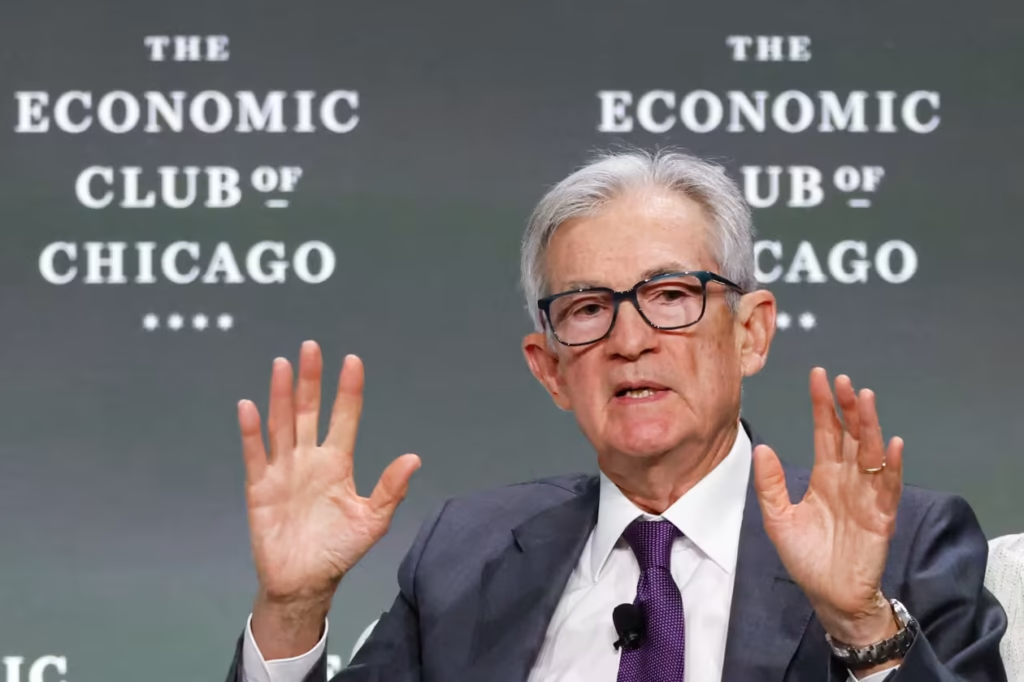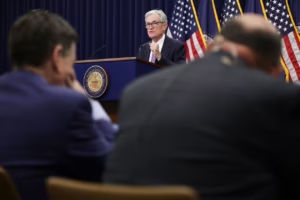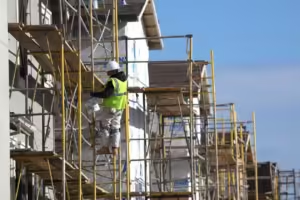Fed Chair Jerome Powell stated on Wednesday that the Fed may have to deal with the “challenging scenario” of growing inflation while the US labor market is contracting.
The Fed has been granted two objectives by Congress: low unemployment and stable inflation. However, the labor market has been strong since 2021, so the Fed has just had to worry about fighting increased inflation.
Powell claimed that President Donald Trump’s tariffs were higher than anticipated during a speech in Chicago on Wednesday. This implies that the economy will be more severely impacted by the consequences of slower growth and greater prices.
“It is very possible that tariffs will cause inflation to rise, if only temporarily. Powell said that the inflationary impacts might last longer.
Powell pointed out that analysts are also lowering their projections for the U.S. economy for the entire year at the same time. The majority are indicating a persistent slowdown rather than a recession.
The Fed chair stated that before changing interest rates, the central bank might wait and observe how events unfold.
Powell told the Economic Club of Chicago that “for the time being, we are well-positioned to wait for greater clarity before considering any adjustments to our policy stance.”
In a prior address on April 4, the Fed chair used identical phrasing, to which the phrase “for the time being” was added.
He emphasized the Fed’s battle against inflation, stating that it had a “obligation” to prevent the people from anticipating years of rising prices.
“Without price stability, we cannot achieve the long periods of strong labor-market conditions that benefit all Americans,” he stated.
Powell’s firm stance on inflation, which suggests the central bank is content to wait for more clarity on where tariffs will shake out before lowering rates, did not sit well with financial markets.
Powell’s main argument was that the Fed is awaiting the measures before assessing the impact on the economy. “This central bank is really patient,” said Jennifer Lee, a BMO Capital Markets economist.
Powell’s statement that there seemed to be no “hurry” to lower rates amid significant uncertainties surrounding White House policies caused the blue-chip Dow Jones Industrial Average DJIA to drop more than 2,000 points less than two weeks ago, joining other major stock indexes in correction territory.
The majority of Fed speakers, according to economists, have conveyed “hawkish” comments about the significance of maintaining stable inflation expectations. The Fed is unlikely to lower interest rates until the end of the year, according to several experts. Derivative market traders have factored in four quarter-point decreases by the end of the year because they are worried about a potential recession.
Given how tariffs may affect the public’s perception of inflation, Boston Fed President Susan Collins and Minneapolis Fed President Neel Kashkari have proposed a higher threshold for any rate decreases.
According to Amy Yang, a Deutsche Bank economist, Fed Governor Chris Waller was a dovish outlier, outlining the circumstances under which rate cuts might be justified.
Powell is attempting to communicate that he is going meeting by meeting and keeping his options open, according to former Dallas Fed President Robert Kaplan. Although a move in May is unlikely, Kaplan stated that they might reconsider later this summer if unemployment increases.
He stated in a CNBC interview that “they are going to have to see [a spike] first and analyze it before they act.”





